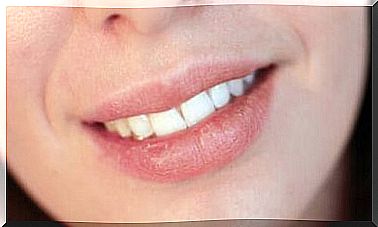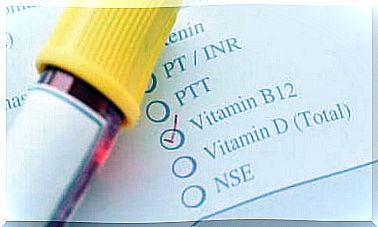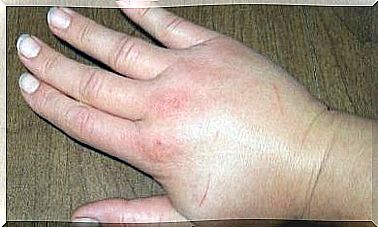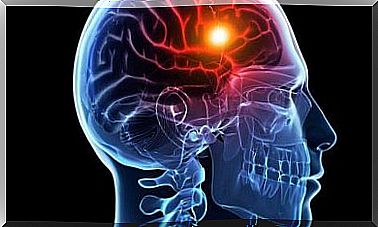What Are The Areas Of The Brain And What Functions Do They Have?
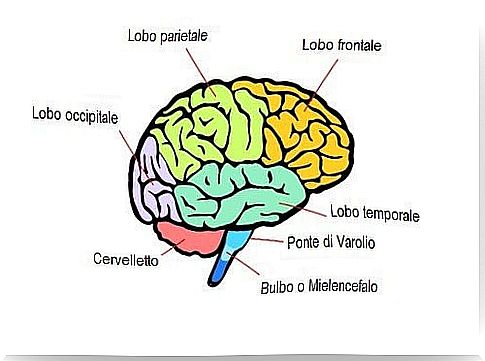
The nervous system and the brain, which is part of it, are very complex structures. In today’s article we will broadly address what the different areas of the brain are and their main functions.
The aim is to explain, in the simplest way possible, the functioning of the most important organ of our body.
The brain is the organ responsible for controlling and regulating the functions of the body. This organ is made up of thousands of nerve cells that respond to various stimuli sent by our body and the external environment.
Continuous research is carried out to study areas of the brain and their functioning. It is even thought that doubts are much more numerous than certainties with respect to its total potential.
What are the main areas of the brain
The brain is located inside the skull, whose function is to protect it, since it is a very delicate organ and vulnerable to any injury. It accounts for only 2% of body weight and uses 20% of the energy we produce. Its weight is, on average, 1.36 kg.
The brain is divided into three areas : brainstem, cerebellum and brain proper.
- Brainstem : This part is located at the base of the brain. It monitors vital functions such as heart rate, digestion, breathing and blood pressure. It also forms a communication bridge between the brain and the rest of the body, via the spinal cord. The brain stem is in turn subdivided into: bulb or myelencephalon, Varolio’s bridge and midbrain.
- Cerebellum : The cerebellum is the organ that is responsible for maintaining balance and posture, and is involved in all the motor processes of our body. He is responsible for the accuracy and coordination of all our movements.
- Brain proper : the brain is linked to the senses, emotions, memories and reactions. In other words, it is the head of our body, the organ that receives stimuli and takes care of translating them into responses.
An easy example
If we are cooking and suddenly we place our hand on a very hot surface, our brain receives a signal that indicates a high temperature and the resulting risk; responds, then, immediately sending a command to our hand, or rather to the muscles of the hand to be more precise, so that it moves immediately. Of course, this all happens in a split second.
It is also necessary to mention two other important structures that make up the brain:
- The limbic system : deals with processing emotions. Within this system there is a structure called the amygdala, which controls, processes and stores our emotional reactions.
- The cerebral cortex : it is a laminar and thin layer. It is first divided into two cerebral hemispheres, the right and the left, which in turn are divided into four lobes.
Areas of the brain: the hemispheres
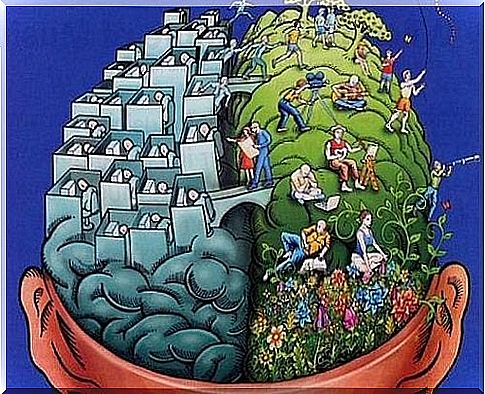
Both hemispheres are connected to each other by a structure called the corpus callosum. The right hemisphere is in charge of controlling the left side of the body, while the left hemisphere is in charge of controlling the right side of the body.
It is for this reason that in cases of cardiovascular accidents the damage caused will depend on the hemisphere that was affected. If the injury has compromised the left hemisphere, then the right side of the body will be affected; if instead the lesion has hit the right hemisphere, then the injured part of our body will be the left one.
The right brain hemisphere is related to the field of non-verbal expression, such as intuition and recognition of faces, voices and melodies. In this hemisphere, thoughts and memories are manifested through images.
The left cerebral hemisphere is the predominant one in almost all people and is related to the verbal domain. If this area is injured, the affected person will have great difficulty in writing and speaking, as well as having severe problems expressing and understanding language.
Additional functions of this hemisphere are: the ability to analyze, logical reasoning, solving numerical problems, etc.
The areas within the hemispheres: the lobes
Each hemisphere is normally divided into four areas or lobes: frontal lobes, parietal lobes, temporal lobes and occipital lobes.
- In the frontal lobes, conscious thinking is processed and that is where problems are solved.
- The parietal lobes are responsible for the perception of stimuli related to touch, pressure, temperature and pain.
- The temporal lobes deal with the perception and recognition of auditory and memory-related stimuli.
- The occipital lobes are related to visual stimuli.
There is still a lot of uncertainty about the functioning of this organ so complex and so wonderful at the same time. Thanks to continuous scientific research, it is possible to obtain ever more precise information.
Conclusion
To conclude, we could say that the brain controls and regulates most of the vital functions of our organism: examples are heartbeat and blood pressure, for which no conscious effort is necessary.
We can therefore say that the different areas of the brain intervene both in involuntary movements, such as those just mentioned, and in voluntary ones, or those movements that we decide to realize in a conscious way.
The brain also takes care of regulating other aspects such as sleep, hunger, thirst, in addition to our emotions, learning, memory, thinking. In other words, there would be no life without the brain.

